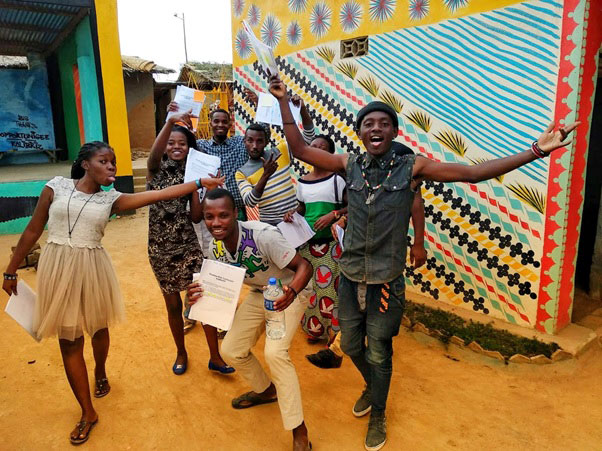
The creative process creates an expanded capacity of joy, love and confidence
Kampala, Uganda | DOMINIC MUWANGUZI | Questions abound how communities across the world can now cope with the increasing numbers of depression in the population. This is as a result of the Covid-19 pandemic which has inspired a myriad of social economic problems in several households including unemployment, domestic abuse, rape and adolescence pregnancy.
As expected, these problems have given room to issues of depression and anxiety which are often associated with circumstances of uncertainty. What is next, is everyone’s question.
With more questions but less answers, scientists have since identified art as a tool of treating depression. Described as art therapy among mental health professionals (psychiatrists), it has the impact of improving one’s emotions and feelings when applied by professional art therapists.
The creative process, according to several online studies on Art and Mental health therapy offers opportunity for new thoughts and possibility of better future.
Elisabet Kvarnstrom’s article ‘Using Art therapy to Create Freedom from Depression’ published on bridgestorecovery.com website, observes “depression is inherently about creation”.
The clinical psychiatrist goes on to reveal that through the creative process a patient ( client) creates an expanded capacity of joy, love and confidence coupled with a new future in which they can live harmoniously with themselves and the world which surrounds them.
The psychiatrist is probably only emphasizing a fact which has been around for a while; but had never been given any such due attention in many societies until recently. The findings by the psychiatrist were published in 2017 after a study on the impact of using art as a form of therapy on selected mental health clients.
The study should not come as a huge surprise given the Mental health realities which exist in the Western world. This is attributed to a complexity of factors including enormous pressure from work, drug abuse, effects of non- communicable diseases on the elderly and the nuclear family setting which pervade most of the western societies.
Yet the history of art therapy, especially in United States of America, is traced back as far as after the Second World War and thereafter. During this period, millions of Americans lost employment as a result of economic depression. The crisis threw many of these into depression and scientists had to work around the clock to create an alternative intervention to the lean medical personnel which was available at the time.
It is evident that desperate situations like was the case with the economic crisis in America, invite for alternative interventions to curb the existing problem. Africa, today faces severe consequences of the Covid-19 pandemic and its post- traumatic effects because of its fragile health sector.
In Uganda, until recently there were only 47 psychiatrists working countrywide. These appalling statistics obviously imply the Mental health sector is critically incapacitated to handle the evidently rising number of depression and anxiety cases among the population.
Post- traumatic depression is brought about by job loss and unemployment, domestic abuse, starvation, rape and pregnancy in adolescents. These have been recurrent since the pandemic struck the country and radical measures like the lockdown had to be imposed nationwide.
What is at stake now is how the government is going to responsibly handle this crisis in the midst of a frail health system. Interestingly, Art therapy is not a new phenomenon in the Uganda situation. It was used before to treat clients at Butabika Mental Health Referral Hospital in 1967.
The process of treatment involved a collaborative engagement between clinical psychiatrists at Butabika, clients and artists from Makerere School of Fine, volunteers and clients (Mental health patients). The climax of the program was an exhibition: Psychotic Art Exhibition 1968 which was organized by Dr. Kakooza and Jonathan Kingdon- senior lecturers at Margaret Trowell School of Fine Art.
In recent times, community based organizations have conducted Art therapy sessions (painting, storytelling, performance art- music, dance and drama) to treat depression among war refugees in Nakivale refugee camps in South Western Uganda.
Against such a background, every opportunity should be used to integrate art in the Mental health therapy program. This is because of the potential painting and other art forms have in creating freedom of expression.
On the other hand, Art therapy creates new thoughts and possibility for a better future. They may be few cases of depression in the future if this model is adopted, but also decentralized to the grassroot communities where it is urgently needed.
 The Independent Uganda: You get the Truth we Pay the Price
The Independent Uganda: You get the Truth we Pay the Price


